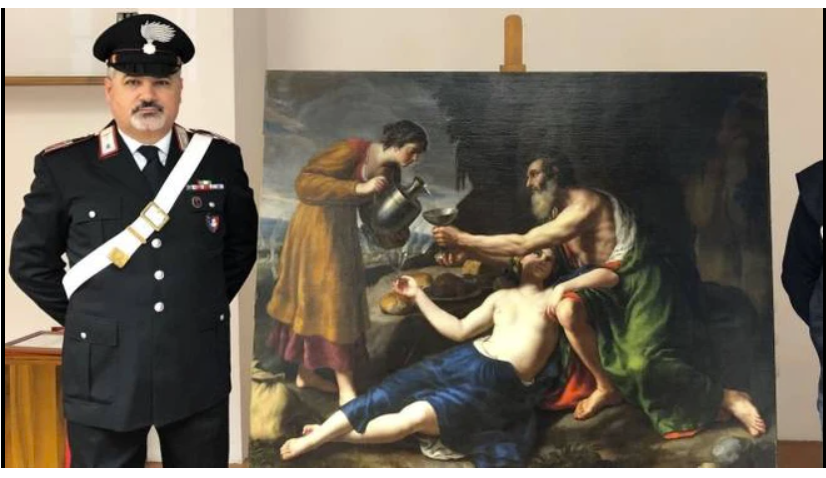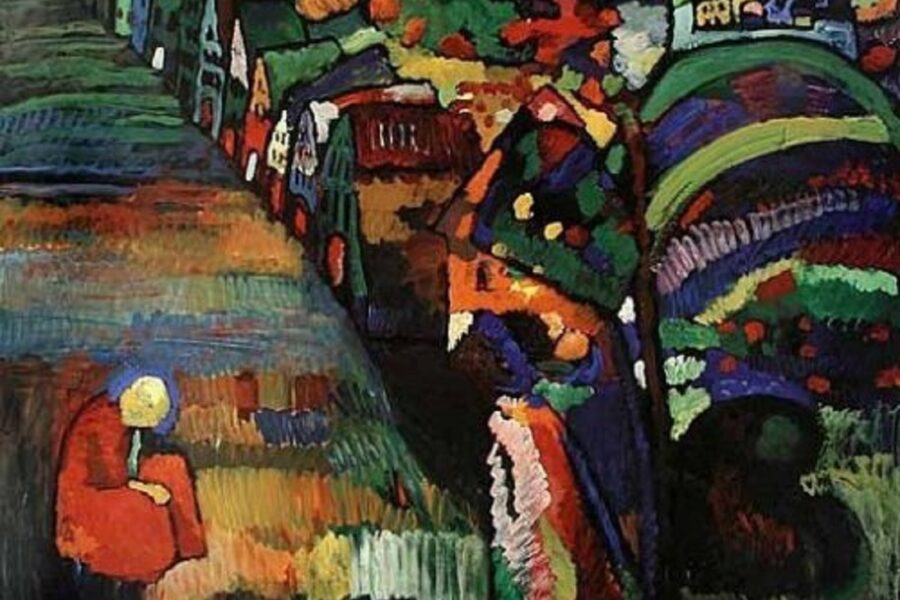[THIS IS AN ENGLISH TRANSLATION OF THE ORIGINAL ITALIAN ARTICLE “Gli ebrei, i nazisti e l’arte razziata: “Trovare i capolavori, un dovere” PUBLISHED ON IL GIORNO MONZA BRIANZA ON APRIL 2, 2021.] (https://www.ilgiorno.it/monza-brianza/cronaca/capolavori-rubati-1.6203365)
Monza, the Canadian “monument men” and the recovery of the seventeenth-century painting in the hands of a Milanese gallery owner
by DARIO CRIPPA Published April 2, 2021
Article The Indiana Jones of art and the museum of rediscovered goods
Article Recovered painting stolen by the Nazis

One of the works recovered by the carabinieri
Monza, 3 April «The return of cultural assets looted during the Second World War is important for moral, legal and emotional reasons. The outcome that the family can now enjoy is a blessing and the collaboration shown by the Gallery in returning the painting was an important gesture, for many reasons. The family is grateful to the Galleria, its lawyer and the carabinieri. “The words of James Palmer, founder of Mondex Corporation, a company created in 1993 in Toronto, Canada with the aim (also) of helping those who have suffered theft, close the circle. of works of art to recover them. The alleged painting by Poussin looted in 1944 from a Jewish family in France and now found by the carabinieri of the Cultural Heritage Protection Unit of Monza has already boarded a plane bound for Canada. It will return to the availability of the heirs of the family victim of the Nazis during the Second World War The Mondex Corporation also helps to reconstruct the story.
It all began in 1944. The Bloch family (René Moise, who died in 1942, and his wife Suzanne) are wealthy Jewish timber merchants and live in Alsace, in Strasbourg. On January 31, Emile and his family, who remained in France, were arrested by the Nazis. Between February and August, the so-called M-Aktion (Möbel-Aktion) takes place, a general looting operation organized by the Nazis: while the Jews are deported to concentration camps, their apartments are looted. It also happens to a house of the Bloch family in Poitiers, from where a beautiful 17th century painting also disappears. This is Loth avec ses deux filles lui servant à boire, attributed to the French master Nicolas Poussin, although a deeper analysis will reveal that it is instead a work of the Italian painter Alessandro Turchi (1578-1649).
The descendants of the Bloch family, as soon as the war is over, begin a long work to try to regain possession of the goods they had seen stolen. They turn to all channels set up specifically to track down works of art, a file on the lost Poussin ends up in the Répertoire des biens spoliés en France durant la guerre 1939-1945.
However, there will be no trace of the work for decades. The latest descendants of the Blochs – a 98-year-old woman now living in French-speaking Switzerland and a 65-year-old man from New York – try to turn to the Canadians of the Mondex Corporation to try to locate the painting and prove the right to have it returned. The turning point in 2019, when the painting makes its appearance at Tefaf art, an international fair held in Maastricht, the Netherlands. It is here that a Dutch art expert, residing in Italy, notices the work and remembers having seen it in his time in the special catalog of works stolen by the Nazis. He finds a way to warn the Bloch family, who through a Milanese lawyer, the lawyer Giuseppe Calabi of CBM & Partners, goes to lodge a complaint with the carabinieri of the Cultural Heritage Protection Unit of Monza. The investigations of the men under the orders of Major Francesco Provenza do the rest. The painting, which had already been temporarily brought to Brussels in 2017, is located in Padua, in the gallery of a Milanese antiquarian, the Gallo Fine Art, which is immediately sensitive to the fate of that painting bought in good faith. His return is arranged through his lawyer Emanuele Tessari, of the SLCD of Padua. The carabinieri seize the work, which is on its last journey. Destination Canada. Destination “justice”.


